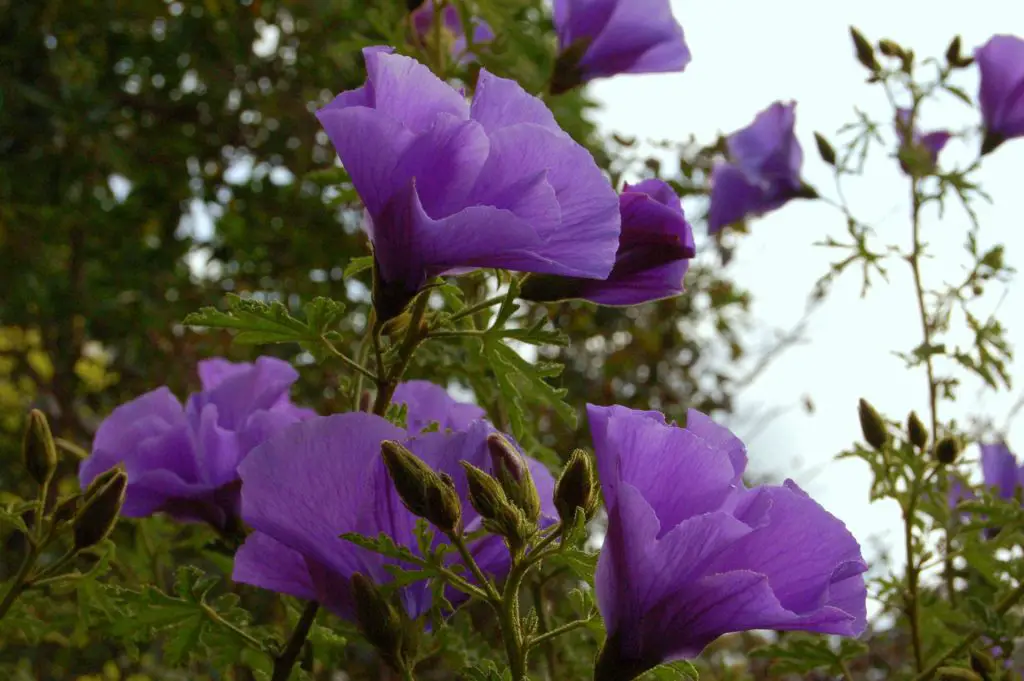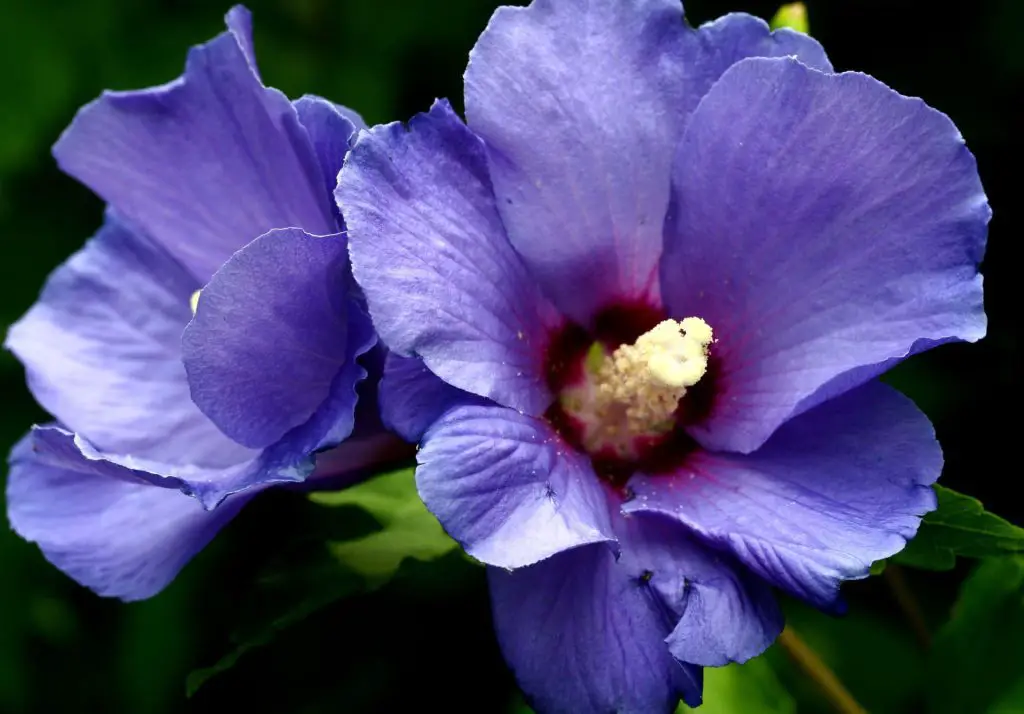Unveiling the Enigma: The Allure of Blue Hibiscus Flowers
As I stood before the majestic blue hibiscus flower, I was struck by its ethereal beauty. The delicate, almost translucent petals seemed to glow with an otherworldly light, as if infused with the essence of a tropical sunset. It was as if I had stumbled upon a hidden treasure, a secret gem that only revealed itself to those who dared to venture into the uncharted territories of the botanical world.
And yet, this elusive flower had been shrouded in mystery for centuries, its existence a whispered rumor among gardening enthusiasts and horticultural experts. Today, I invite you to join me in uncovering the secrets of the blue hibiscus, to explore the unique conditions that foster its growth, and to learn the art of coaxing this enigmatic beauty into bloom.
The Elusive Blue Hibiscus: Understanding the Flower

The hibiscus plant, with its striking flowers and delicate foliage, has been a staple of tropical gardens for centuries. However, the blue hibiscus, with its hauntingly beautiful blooms, is a rare and unusual variant that has captivated the imagination of gardeners and botanists alike. But what sets the blue hibiscus apart from its more common cousins?
To understand the blue hibiscus, we must delve into the science behind its unique coloration. While most hibiscus flowers owe their vibrant hues to the presence of anthocyanins, powerful pigments responsible for the red, purple, and blue colors of many plants, the blue hibiscus owes its color to a rare genetic mutation. This anomaly, which affects the production of anthocyanins, results in the characteristic blue-gray hue that has come to define this elusive flower.
Cultural Significance:
Blue hibiscus flowers have cultural and symbolic meanings in various societies. For example, in Hawaiian culture, the hibiscus is a symbol of love, beauty, and gentleness. In some Asian cultures, blue flowers are associated with good fortune and prosperity. Adding a section on the cultural significance of blue hibiscus flowers could add depth and interest to the article.
Medicinal Properties:
Hibiscus flowers, including the blue variety, have been used in traditional medicine for centuries. They are said to have anti-inflammatory, antioxidant, and antiviral properties. A section on the medicinal properties of blue hibiscus flowers could be included, along with warnings about potential interactions with modern medications.
Blue Hibiscus in History:
Blue hibiscus flowers have been depicted in art and literature throughout history. A section on the historical significance of blue hibiscus flowers could be included, along with examples of their depiction in art and literature.
Conservation Status:
Some species of hibiscus, including the blue variety, are threatened or endangered due to habitat loss and other environmental factors. A section on the conservation status of blue hibiscus flowers could be included, along with information on how to support conservation efforts.
Blue Hibiscus in Modern Times:

Blue hibiscus flowers are still used in modern times for various purposes, such as in skincare products, teas, and as a natural dye. A section on the modern uses of blue hibiscus flowers could be included, along with information on how to incorporate them into daily life.
Creating the Perfect Environment: Climatic Conditions and Zones

If you’re determined to grow your own blue hibiscus, it’s essential to create an environment that replicates the ideal conditions found in its native habitats. Blue hibiscus plants thrive in USDA Hardiness Zones 9-11, where the temperature remains consistently above 64°F (18°C) and the humidity is relatively high.
To mimic these conditions, ensure your blue hibiscus plant receives:
- Full sun to partial shade, depending on the time of day
- Warm temperatures, ideally between 65°F (18°C) and 95°F (35°C)
- High humidity, which can be achieved through regular misting or the use of a humidifier
- Well-draining soil, rich in organic matter and nutrients
For gardeners living in cooler zones, fear not! You can still grow your own blue hibiscus by utilizing containers, greenhouses, or indoor growing spaces. Simply ensure that your plant receives the necessary warmth, light, and humidity to thrive.
Planting and Growing Blue Hibiscus: Best Practices
With the ideal environment in place, it’s time to plant your blue hibiscus. When selecting a plant or seeds, look for the following characteristics:
- Healthy, vigorous growth
- Strong, sturdy stems
- Lush, dark green foliage
- No signs of pests or diseases
When Planting, Follow These Steps:
- Choose a container that is at least 12-14 inches deep, with good drainage holes to prevent waterlogged soil.
- Use a high-quality potting mix specifically designed for tropical plants.
- Plant the blue hibiscus at the same depth as it was in its original container, or slightly deeper.
- Water thoroughly, and then provide consistent moisture, but avoid overwatering.
- Fertilize regularly, using a balanced, water-soluble fertilizer.
Companion Planting:
Blue hibiscus plants can benefit from companion planting, where other plants are grown alongside them to enhance growth, flavor, or pest resistance. A section on companion planting for blue hibiscus could include recommendations for complementary plants and how to use them effectively.
Caring for Your Blue Hibiscus: Tips and Tricks

As your blue hibiscus plant grows, it’s essential to provide regular care and maintenance to encourage healthy growth and blooming. Here are a few tips to keep in mind:
- Watering: Water your blue hibiscus plant when the top inch of soil feels dry to the touch. Avoid getting water on the leaves or flowers to prevent fungal diseases.
- Pruning: Prune your blue hibiscus plant regularly to maintain shape, promote new growth, and encourage blooming.
Pest and Disease Management:
While the article mentions pest control, it could be expanded to include more specific information on common pests and diseases that affect blue hibiscus plants, such as aphids, whiteflies, and root rot. This could include organic and integrated pest management strategies.
By following these tips and providing your blue hibiscus plant with the necessary care and attention, you’ll be rewarded with an abundance of delicate, blue-gray flowers that will add a touch of elegance and sophistication to any garden or indoor space.
Propagation and Sharing: Spreading the Joy of Blue Hibiscus

As your blue hibiscus plant flourishes, you may find yourself eager to share this rare and beautiful flower with fellow gardening enthusiasts. Propagation is a wonderful way to spread the joy of blue hibiscus, and there are several methods to choose from:
- Cuttings: Take 4-6 inch stem cuttings from the tips of healthy branches, and root them in a propagation tray or pot filled with moistened perlite.
- Seeds: Collect seeds from mature blue hibiscus flowers, and sow them in a seed starting mix. Keep the soil consistently moist, and provide warmth and light until germination.
- Division: Carefully divide the roots of a mature blue hibiscus plant, making sure each section has at least one growing stem. Replant the divisions in a new container or bed, and water thoroughly.
Breeding and Hybridization:
Blue hibiscus flowers are often the result of careful breeding and hybridization. A section on the history of blue hibiscus breeding and the challenges of creating new varieties could be included, along with information on how to breed and hybridize blue hibiscus plants.
By sharing your blue hibiscus plants or seeds with others, you’ll not only spread the joy of this elusive flower but also contribute to its preservation and proliferation.
Cut Flower Arrangements:
Blue hibiscus flowers are stunning in cut flower arrangements. A section on how to use blue hibiscus flowers in arrangements, including tips on flower care and handling, could be included.
Final Thoughts
The blue hibiscus, with its otherworldly beauty and rare genetic mutation, is a true marvel of nature. By creating the perfect environment, providing regular care and maintenance, and propagating this elusive flower, you’ll be rewarded with an abundance of delicate, blue-gray blooms that will add a touch of elegance and sophistication to any garden or indoor space.
So why not take the challenge? Embark on a journey to grow your own blue hibiscus, and discover the thrill of cultivating this rare and beautiful flower. With patience, dedication, and a little bit of luck, you’ll be rewarded with a true botanical treasure that will leave you and your fellow gardening enthusiasts in awe.
